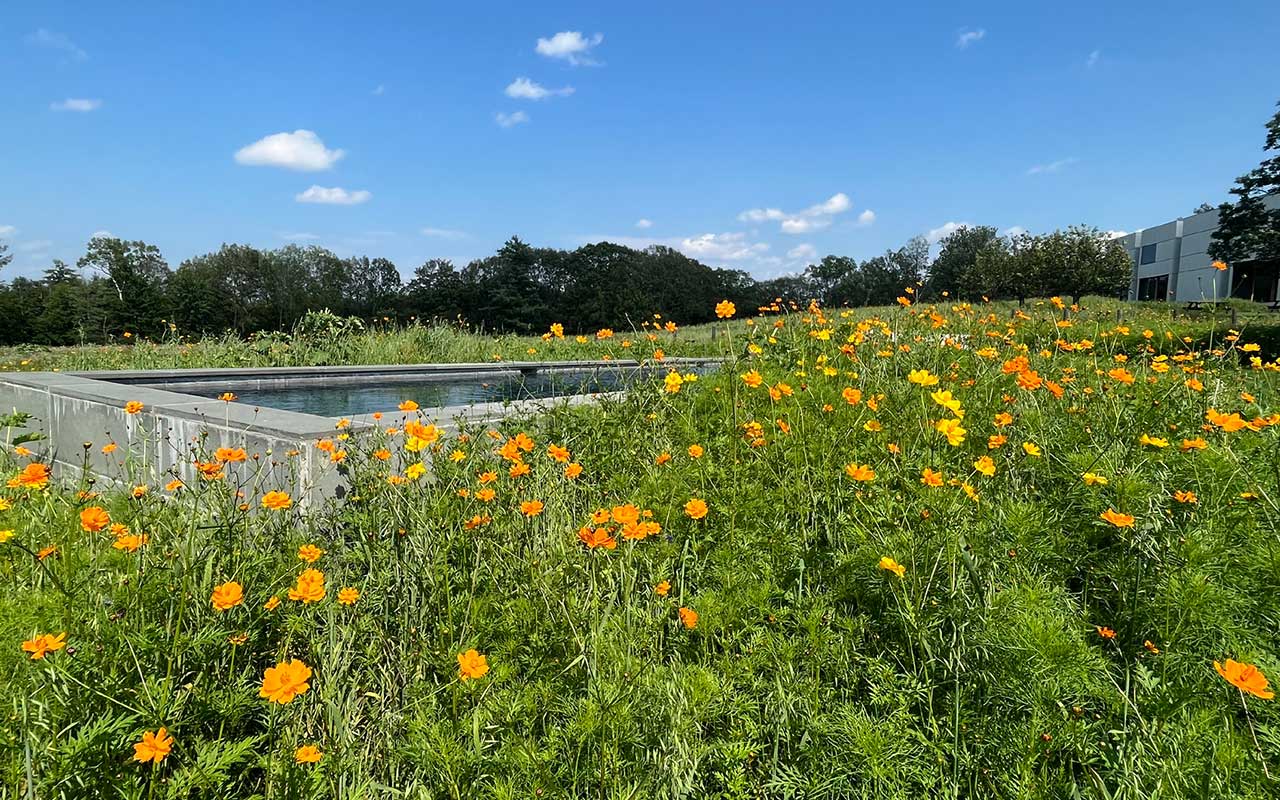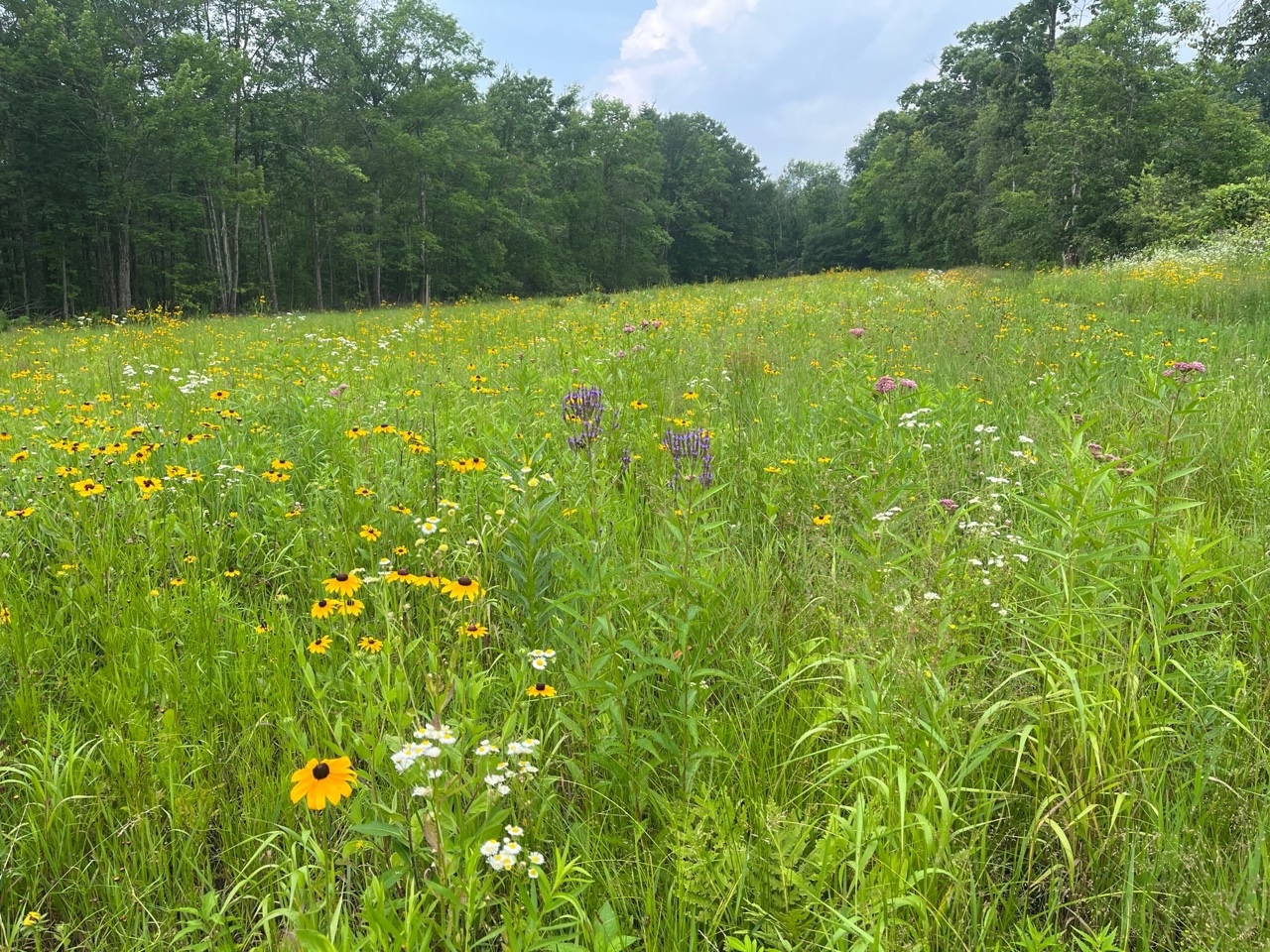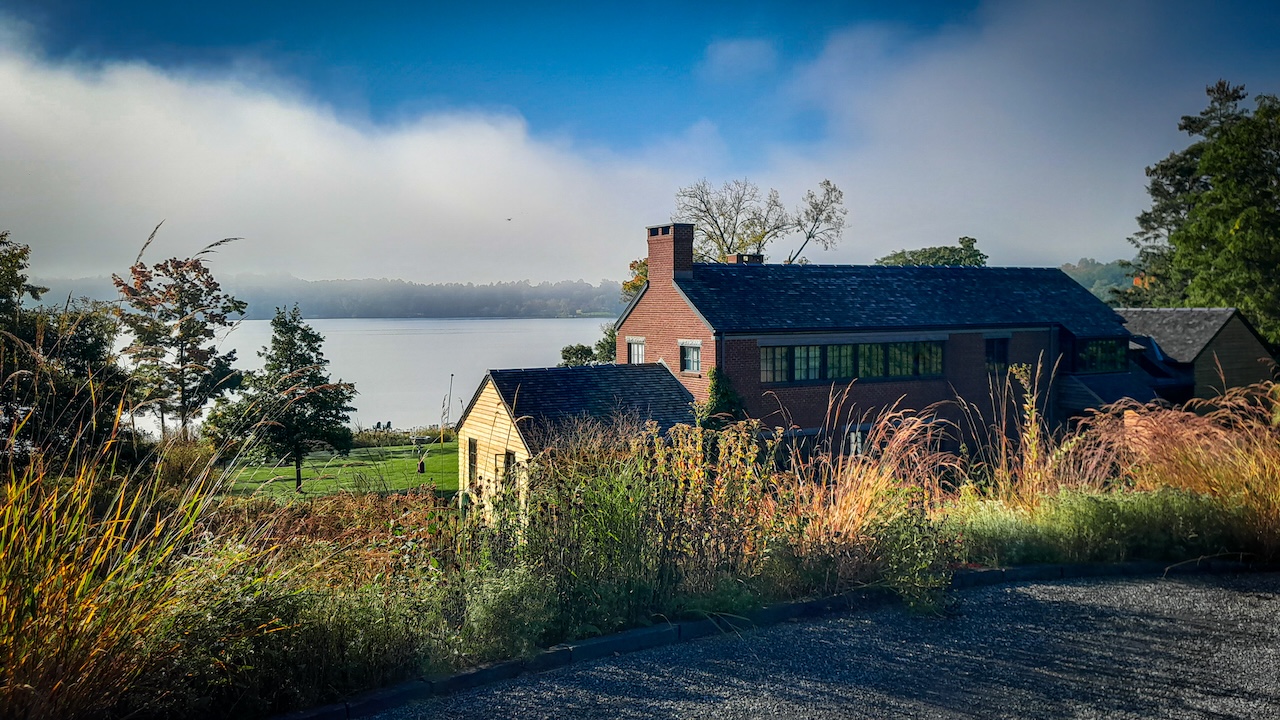Our Environment, Animal Tips & the Great Outdoors

Organic Gardening 101
As spring arrives, many of us are anticipating warm weather gatherings in our outdoor spaces. Eager to plant colorful flowers and shrubs and tend to our lawns, we head to our local nurseries or farm stands and rehire our landscapers, some of who employ traditional practices like using fertilizer and planting species that aren’t native to our area.
What we may not realize are the ways in which these choices can be detrimental to the environment, cause land destruction, and endanger our wildlife. Luckily, in recent years there’s been an uptick of interest in using organic landscaping practices rather than traditional methods. One of the major marks of distinction between the two comes down to plant choice.
Local efforts
Falls Village, CT, is home to Meadowscapes, an organic landscaping company that is working to create the change that it wants to see in the region. Founded in 2022, it is the ecological division of Matt’s Landscaping, a full-service outdoor construction and maintenance provider helmed by Matt Schwaikert. The company evolved into the organic landscaping sector after a chance encounter between Schwaikert and ecological landscape practitioner, Michael Nadeau.
The Meadowscapes team believes they can foster change on a local level. “We can be a haven for biodiversity and land stewardship. When we plant native plants, we allow the natural world to function properly,” said Beth Romaker, project manager and landscape designer at Meadowscapes.
A quick biology lesson explains why gardeners should consider ecological practices. Many insects have host-specific relationships with plants. Their species can only reproduce on one specific plant. Romaker pointed to genera like the oak (Quercus), which support more than 4,000 species of insects and animals. By using these plants, we can ensure the survival of biodiversity.
Native plants also thrive in native soils. They’re easier to maintain, less expensive, and don’t require amendments that change soil structure, annual mulching, irrigation, or fertilizer. Some examples include foxglove beardtongue (Penstemon digitalis); New England aster (Symphyotrichum novae-angliae); and eastern star sedge (Carex radiata).
Romaker believes that ecological landscaping companies like Meadowscapes are gaining in popularity. She credits Doug Tallamy, an entomologist, ecologist, and conservationist, who has contributed to the current shift.

Ecologically driven
Ecologically conscious practices and decision making guide Romaker’s work. After graduating from the University of Vermont with a BS in forestry and a minor in ecological agriculture, Romaker studied landscape architecture and permaculture.
Then she worked as an ecological forest health technician, on a native plant and nut tree farm in the Hudson Valley, and as a forester for the NYC Department of Parks & Recreation, Romaker now dedicates her time to creating change – one meadow or garden at a time.
Meadowscapes works with local ecosystems to restore biodiversity, soil health, and human connection with nature in an aesthetic and meaningful way. “This takes a deep knowledge of ecological systems and native flora and fauna. We identify patterns on the landscape and utilize them to transform a property into a visually stunning and ecologically functional space that will require less long-term maintenance than a traditional landscape,” said Romaker.
Future focused
When we look at the state of the natural world, the need for native landscapes and ecological practices becomes evident. According to a 2023 report issued by the Center for Biological Diversity, 40% of animals, 34% of plants, and 40% of ecosystems nationwide are at risk. Wetlands and grasslands have been particularly subject to destruction.
“We’ve lost billions of migratory birds and between 250,000 and 500,000 species of insects worldwide – the foundation of the food web. These numbers don’t account for habitat degradation, which is extremely widespread,” said Romaker.
Unfortunately, more forests are also being impacted by invasive species. Green spaces are losing mature trees due to over-harvesting and the rampant spread of new diseases and non-native insects. Development causes habitat fragmentation and lowers the species richness of an ecosystem. If we don’t swap traditional landscaping practices with ecological ones, this trend will only be exacerbated explains Romaker.
When we don’t look at how we can co-exist with the plants and animals that have lived on this land for millennia, we risk losing them. Grassland birds in the area, including the Eastern meadowlark, bobolink, and grasshopper sparrow, are disappearing rapidly as natural fire regimes are suppressed and hayfields are mowed during nesting season.
“We owe our lives to the stability of ecosystems that serve us by controlling floods, pollinating crops, purifying drinking water, and providing renewable energy, among many other things. That stability depends on biodiversity,” said Romaker.
Spreading the seeds
Unlike highly cultivated ornamental flowers, native species produce viable seeds that will propagate themselves not only in the garden, but also in the surrounding environment.
“This aspect of spreading into the wider world is a huge benefit of native gardens. It’s also why we chose ecotypic native plants whose genetic origins are from our own local ecosystem whenever we can. These are often very hard to find at nurseries, which is why we are now growing them ourselves,” said Romaker.
“In my opinion, part of the joy of native gardening is taking part in the natural dynamics at play in your yard. For example, a cardinal flower is a short-lived perennial. Its continued presence in a garden relies on light soil disturbance to promote seed germination. Cardinal flowers are an excellent late-season source of rich nectar for ruby-throated hummingbirds, and they have a lot to offer in return for the gardener’s efforts,” said Romaker.
Although private residences have been its focus, Meadowscapes has set its sights on doing more work in the public and commercial landscape sector. In addition to working with local land trusts, it is involved with the Forge Project, a “Native-led organization with a mandate to cultivate and advance Indigenous leadership in the arts and culture. It operates on the ancestral, unseeded lands of the Stockbridge-Munsee peoples.” For the project, Meadowscapes is planting a plethora of native species.

Gardening tips and tricks
Romaker offers some suggestions that local homeowners and gardeners can easily adapt into their practices. Using practices learned by observing nature, which is called “biomimicry,” can dramatically increase the health and productivity of your gardens. Here’s what Romaker suggests:
• Use ground cover plants such as purple poppy mallow (Callirhoe involucrata) or heath aster (Symphyotrichium ericoides) to eliminate the need for annual mulching and to suppress weeds. Choose plants that stay below 12 inches high and spread by rhizomes, which are shallow roots that creep through the soil and create new stems. Many rhizomatic woodland species, like Meehan’s mint (Meehania cordata), are great choices because they bloom in the spring and then receive shelter from the hot sun as summer dominant plants grow over them.
• Cut weeds, don’t pull! It isn’t nearly as satisfying, but every time a plant is pulled, new weed seeds are brought up and germinate in their stead.
• When gardening in a small space, it can be hard to achieve a season-long blooming scheme because plant diversity is naturally low. Choose plants like threadleaf bluestar (Amsonia hubrechtii) and black cohosh (Actaea racemosa), which have a good architectural form, textured foliage, and/or fall color that provide seasonal interest even when not in bloom.
• As long as they haven’t gone to seed, save your weeds in a five-gallon bucket. Fill it with chlorine-free water, loosely cover, and allow it to sit for a day or two. You can use this as an organic fertilizer in your veggie garden or orchard. Just make sure it doesn’t go anaerobic because it can breed negative microbes like root-feeding nematodes.
• Do not mix soil layers when you’re planting, and similarly, do not amend native soil with compost unless the soil is highly disturbed (no visible soil horizons, severe compaction, etc.). Mixing is a very common practice when planting fruit trees, but the division between native soil and amended soil will reduce nutrient exchange capacity and inhibit root growth. Top dressing with compost is the way to go.
• Planting with plugs (which are small, deeply rooted plants) will save you a lot of money. They are less than half the price of larger one-gallon plants, so you can double the size of your garden!
• Instead of putting seeds out in a bird feeder, which can be expensive and attract bears, plant a bird garden with native plants that yield nutritious berries and seeds. Utilizing native plants like asters, goldenrods, and switchgrass that host a large diversity of insects is great for birds, too – 95% of baby birds depend on caterpillars. Use shrubs like Ilex verticillate, so that birds feel comfortable – they don’t like to be out in the open with no cover.
• When using native plants, do not water them after they’ve become established. This usually takes three to six weeks depending on rainfall, aiming for one inch of water per week. Overwatering diminishes plant vigor by reducing their natural relationships with soil biology and will often cause them to become floppy. When establishing, water deeply, slowly, and infrequently.
• Don’t over mulch! Two-to-three inches should do the trick for most garden beds. Over time, traditional mulches tend to form a crust if they are too thick to properly decompose. This can end up wicking water away
from soil and reduces critical soil and air gas exchange, killing soil microbes.
• Leave gardens standing throughout the winter to encourage residency by overwintering insects.
• If you have issues with water pooling or running off your property, use swales to channel the water properly and plant water-loving plants and shrubs to absorb excess water. Your swales could end in a pond, where you can introduce even more habitat and biodiversity to your landscape.
• Don’t forget to prune! Pruning encourages plant health and vigor by increasing airflow, reducing weight, and increasing blooms. Pruning is best done at the end of winter when fresh cuts have less of a chance to dry out in cold winter temperatures.
Happy gardening! •
To learn more about Meadowscapes, an ecological division of Matt’s Landscaping, which is located in Falls Village, CT, please call the office at (860) 824-1188 or email meadows@mattslandscapingct.com. You can also visit online at nativemeadowscapes.com.


